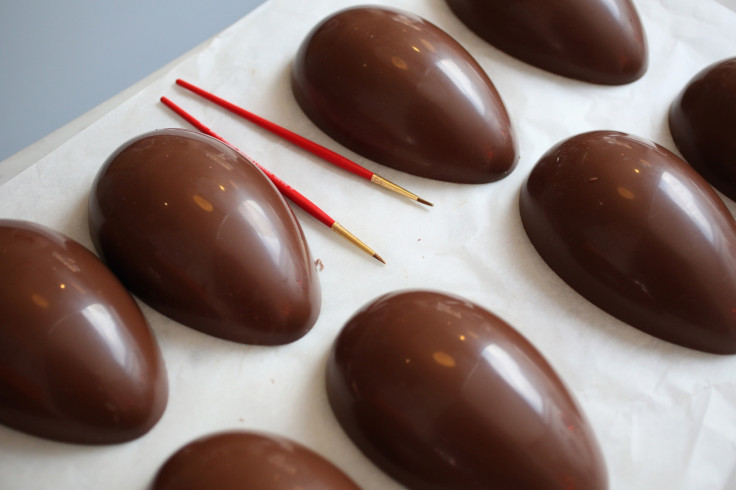Easter 2015: How to make your own chocolate Easter eggs

A crisis has emerged with just a few days to go before Easter – supermarkets are running out of Easter eggs. On the Tesco website, the most popular eggs are sold out, leaving shoppers hunting far and wide for leftovers in other stores.
There is another option for those feeling creative. Crafting your own chocolate eggs is not as complicated as it might sound, although the process can be slightly messy. All you need is some good quality chocolate, some egg moulds – which are available from many good kitchenware shops such as Lakeland – and a dash of sunflower oil. You can even add chocolate buttons or other sweet decorations to put a personal stamp on your Easter egg.
How to make your own chocolate Easter egg
Step one: Prepare the inside of the egg moulds by cleaning them with a piece of kitchen towel and smearing a drop of sunflower oil on the inside. This will ensure the chocolate will not stick to the mould, as well as giving the Easter eggs a gleaming finish.
Step two: The next step is to temper the chocolate, a method of heating or cooling chocolate for moulding or coating other foods. Break the chocolate into chunks and melt carefully into a bowl over a pan of gently simmering water. Make sure the water is not boiling, or the chocolate will burn. Afterwards, take the chocolate off the heat and allow to cool slightly.
Why do you have to temper chocolate? This is essential to creating good-quality chocolate, as if you heat and cool chocolate without controlling the temperature, the crystallisation of the cocoa butter will result in crystals of different sizes forming. This means the chocolate will appear with white patches and will crumble, not ideal for an Easter egg.
Step three: Use a spoon to pour chocolate into each mould – swirling it around until the inside of the mould is coated. You can use a pastry brush if you need, before removing excess chocolate. Fill each mould in the same way.
Step four: You will need to repeat the process to layer the chocolate, leaving it to set in between each layer for 15 to 20 minutes. Leave the chocolate to set in the mould, lying it flat side down on a hard, flat surface. You can prevent the chocolate sticking to the surface by laying the egg moulds on a piece of greaseproof paper. Use a spatula or knife to draw across the chocolate to make sure there is a clean edge – so the two halves of the chocolate egg stick together.
Step five: When the layers are completed and the egg has set, remove each half carefully from its mould. Stick the two halves together using some melted chocolate and leave to set somewhere cool.
Step six: If you want to decorate your eggs, you can balance them in a mug or an egg cup – depending on the size of the egg – to add chocolate buttons or other sweets.
© Copyright IBTimes 2025. All rights reserved.




















